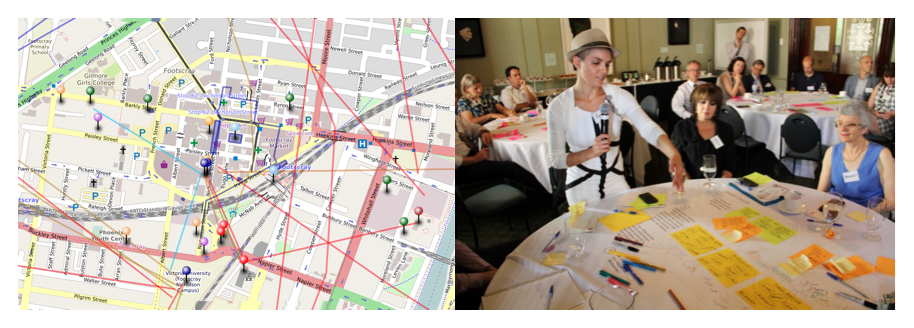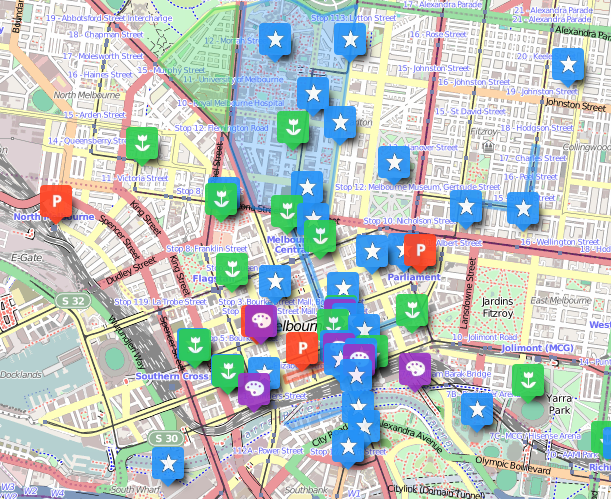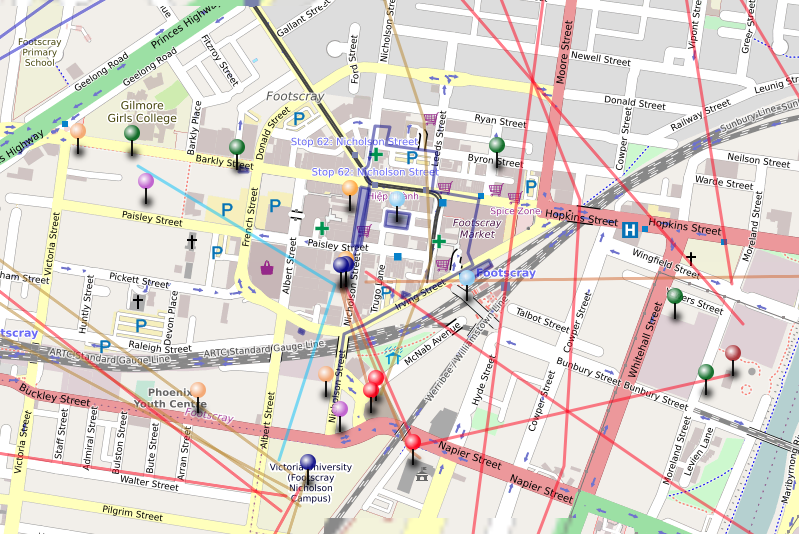In the face of global disruption and change, discover the power to enact the future of your region and community.
Vision Mapping is a powerful way of reimagining our environments. It allows people to see their regions across many dimensions; the layers you create are only limited by the questions you ask. It provides a way to visualise future ecosystems and states in a granular way:
- Use online editable maps to see the future of your environment and community in new ways
- Develop the layers that are of interest to you, such as economic and social interactions, preferred futures and any other system relationship that is of interest to your stakeholders
- By unlocking the power of people’s tacit knowledge, vision mapping gives communities and organisation new ways to understand the present, envision the future and identify actions to take tomorrow.
How our workshops work:
- Action Foresight develop bespoke workshops created to meet the needs of our clients generally running over 1 – 2 days.
- Our workshop are interactive environments using online maps and other methods.
- We facilitate the inquiry as well as help you to learn the vision mapping process.
- We provide dedicated support across research and development periods.
What our workshops deliver:
- See the hidden layers in your area of interest
- Identify the ecosystems to nurture to promote change
- Develop a plan for your preferred future, grounded in the real geography of your community
- Create a visual map of present and future states. Use this map to track change and update with new ideas.
- Capture street level data (e.g. photos) integrated into the map
How vision mapping can be applied to your needs.
Maps strengths, agents of change and inspiring ideas
Use tags and other icons to map strengths and seeds of change in your community and focus your activity to promote the change you need.
We use appreciative enquiry and visioning to build on the strengths and untapped resources in your community. This is ideal for communities that have perceptions of loss of agency and limited resources to support change. Using this approach communities can:
- Recognise the untapped resources in their communities
- Identify seed of change and potential for new developments in their local environment
- Rediscover their agency
- Create an empowering vision for their community
- Map out the prototypes and projects that they can implement
Using the maps we map the seeds of change, strengths in the community and develop a future vision based on what inspires your community. Toggle between the current and future states using the online maps. See both embedded in the geography of your community through the map. Bring it to life by adding local level detail such as photos, text or video. Keep the map alive tracking changes as you go. We partner with Darren Sharp / Social Surplus to deliver this service.
Case Study
“What will Melbourne’s future economy look like in 2026? Will the sharing economy, maker movement and other emerging forms of ownership, production and value exchange take centre stage? The Future Economies Lab sought to find this out through two workshops facilitated by Darren Sharp (Social Surplus) and Jose Ramos (Action Foresight) for Future Melbourne 2026 that combined digital mapping, strategic foresight, appreciative inquiry and human-centred design to imagine changes to our city’s economy over the coming decade.”
Understand how geography and systems shape your community
Using tagging and line interactions, map out the relationships between stakeholders and map preferred future ecosystems.
We use system mapping and visioning to build current and future systems maps in your region. This approach helps you to understand the current eco-system of interest (e.g. innovation, health, government), the interactions and value exchanges across different stakeholders, and developing a vision for a preferred ecosystem. Forming a view of the current interactions is the starting point for building and understanding the desired future state and interim stages.
- Map different types of stakeholders and the different types of exchange between them
- See how new players, changes in the built environment or other features will alter the interactions
- Map out the interactions and systems that will build your community
- See the future and interim states on the map
- Track changes as they arise
Test Case
A Victorian based university used this system’s version of the vision mapping to understand its current and future stakeholder interactions. Different value exchanges were captured. The map provided a single view that all participants could see and understand as a whole, rather than the parts they would interact with. New systems and changes in geography were developed, allowing stakeholder to see both current states, trends and issues impacting the ecosystem and to imagine future states.
Testimonial:
“ Vision mapping is a powerful, innovative and holistic process which brings alive the vision for the future in a way that one can engage with it in a meaningful way” – Mahesh Kandasamy/New Economy Advocate
Uncover the stories that shape your community
Use map layers to look back and uncover the history and hidden narratives that shape your community and how these can be retold to shape a new future.
We use maps and a futures method called causal layered analysis (CLA) to build a representation of historical sites, cultural dynamics and worldviews within a region. Using CLA we explore how this has shaped the narrative of those communities. Using the CLA we help ‘pivot’ these stories, embracing the best of the old alongside the ambition of the community. New narratives are formed that shape the actions and development of your community.
- Map key features, events that shaped the community’s past
- Map narrative by region, what stories do people tell about themselves and what others say about them?
- Create new narratives and collective vision from fractured pieces.
- See these past, present and future views as regional layers on the map
- Map out action and track changes
Test Case
This workshop used Causal Layered Analysis, to analyse and explore the cultural ands narrative dynamics of place, and develop ideas for urban resilience and urban commoning in Footscray, Victoria, through Victoria University and the Centre for Cultural Diversity and Wellbeing’s Social Media Lab, which provided an ideal environment for the exploration, with its 180 degree visual layout. The method followed an “artefact induction” approach, whereby the participants engaged first with the map, and from the map engagement inductively draw out insights and ‘data’ that followed the CLA analysis / reframing process.
Testimonial:
“This workshop leveraged technology to draw on the powerful images of maps in conjunction with layered questioning around culture and worldview. There’s something profound about seeing the spatial dimensions of a ‘place’. It was a compelling way to elicit new insights, images, shared histories and worldviews around our region that we may not have unearthed otherwise” Reanna Browne/Strategic workforce planner and futurist
More info on this test case here.




